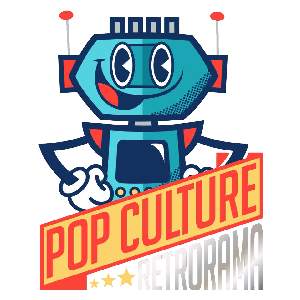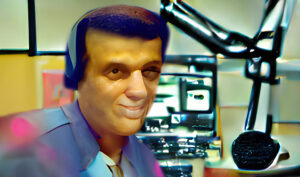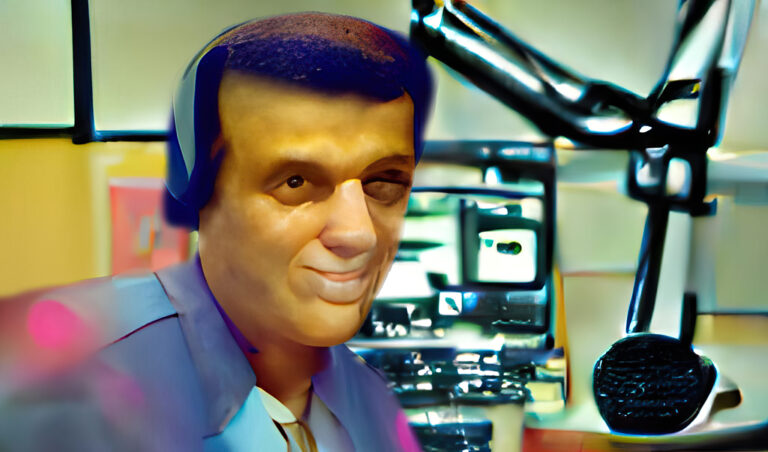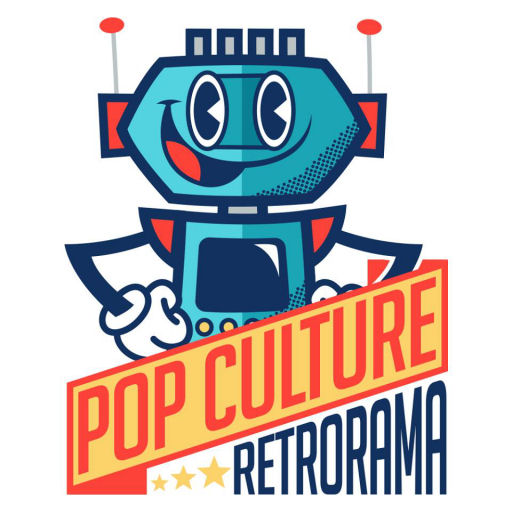In part two of a brief overview of the rather surprisingly influential BBC space opera Blake’s 7, the series has to morph into something completely new to survive into a new decade.
Note: Like the article covering the show’s first two seasons, this article is written…perhaps a bit vaguely…because the author feels strongly that you should be able to watch the show for yourself without overt spoilers.

When we last left Terry Nation’s cult classic BBC sci-fi series Blake’s 7, the actor playing Blake, the show’s main character, had grown tired of the show (and had a more tempting and career-advancing offer from the Royal Shakespeare Company on the table). Gareth Thomas had signed onto the show on the basis of its heavy, dramatic first episode script, which promised a lot of future meat into which a skilled actor could sink his teeth. But over the show’s first two seasons, airing in 1978 and ’79 respectively, the majority of the episodes hadn’t quite lived up to the show’s earliest dramatic possibilities. And Gareth Thomas wanted out. So did Sally Knyvette, who had also been there since the first episode as Jenna; her complaint was very similar. Jenna had started out as a tough-as-nails former smuggler…and had become something of a background decoration aboard the Liberator.
So…show’s over, right? No.
Series creator Terry Nation and script editor Chris Boucher elected instead to reformat the series. Having amassed a loyal fan following as the show’s amoral co-star, Paul Darrow‘s character, Avon, had already made it known that he wanted Blake out of his way so he could command the Liberator. Nation and Boucher decided that he would get his chance. Staying on the show with Darrow were the other “surviving” members of the first two seasons’ cast, Michael Keating as Vila and Jan Chappell as the telepathic former guerilla fighter Cally. (Cally had suffered a similar fate to Jenna thus far: she had started out as a determined resistance fighter before fading into the background as the conscience of the Liberator crew.) Rather than recasting Blake and Jenna, it was decided that they would go missing after the second-season cliffhanger involving an alien invasion force from another galaxy.

The third season opened with Avon, Vila and Cally temporarily abandoning the Liberator after the ship took critical damage in the ensuing battle. That season’s first episode follows Avon to a planet populated by primitive, stone-age brutes…and an exiled Federation weapon designer and his two daughters, whose spacecraft is buried and provides shelter from the elements and the locals. Servalan (Jacqueline Pearce) also lands nearby, her token attempt to lead the Federation fleet from the front having ended swiftly, and sets her sights on taking revenge on the exiles for having defected from the Federation. In the end, only one of the daughters, Dayna (Josette Simon), survives, and she returns to the Liberator with Avon. New crew member #1!
But not so fast: the Liberator, in Avon’s absence, has been taken over by a squad of Federation troops, and Avon and Dayna have to play dumb to survive, especially when the Federation troops start dying violently, one by one; one of the uniformed thugs in their midst, Tarrant (Steven Pacey), is a mercenary who once trained as a Federation officer before deserting. He helps Avon and Dayna get rid of the rest of the Federation squad, just in time to rescue Cally and Vila from a planet where their organs were about to be harvested. New crew member #2!

The crew was back up to five (with ship’s computer Zen and the about-as-portable-as-an-Osborne-One supercomputer Orac adding up to seven). The third season saw the search for Blake lead Avon and his crew into trouble, Servalan’s attempts to consolidate her power after the invasion attempt went down some decidedly strange rabbit holes, Cally’s home planet was wiped out by a Federation-engineered virus, Avon and Tarrant jockeying for command of the Liberator in the Blake-less power vacuum, and Avon going on an obsessive quest to find the agent who turned him over to the Federation before the series began…only to find out that the agent in question had been his lover, and was operating under deep cover (and, apparently, under the covers) the whole time.
The third season ends with Avon following yet another lead to find Blake, and this time apparently finding him, with Gareth Thomas making a return guest appearance…but long story short, it’s a reunion engineered by Servalan in order to wrest control of the Liberator away from Avon. Over the course of the season, Avon and Servalan encounter each other repeatedly, raising the disconcerting notion that she sees him as a corruptible potential ally rather than the enemy that she considered Blake to be. The Liberator was indeed lost at the end of season three, and cast and crew disbanded, assuming this was, finally, the end of Blake’s 7.

When the former stars of Blake’s 7 sat down to watch the broadcast of the third season finale in the spring of 1980, the BBC end-credit voice-over was literally the first any of them had heard that the series had been picked up for a fourth season. The ratings had proven that Blake’s 7 could survive without Blake – perhaps Avon had been the most interesting character all along? – and viewers wanted more.
The sudden renewal came with some significant changes, though. Producer David Maloney, who had helped guide the first three seasons of the series, had moved on to greener pastures, and frequent episode director Vere Lorrimer took over that position, instituting some very visible changes to costuming, lighting and make-up: Blake’s 7, in 1981, could be mistaken for some of the more theatrically flamboyant new-wave videos that were making the rounds at the same time.

Jan Chappell elected not to return, so Cally was killed off in the fourth season opener, which moved Blake’s 7 from its traditional January-through-April Monday night timeslot to a fall-through-winter schedule. Avon, Tarrant, Vila and Dayna commandeered a much smaller, much less powerful space freighter, the Scorpio, after its owner came looking for them specifically for nefarious reasons. His backup, a gunslinger named Soolin (future Dempsey & Makepeace star Glynis Barber), decided to shift her allegiance from him to Avon and crew as a simple matter of survival. Servalan, long absent from the Federation, was assumed dead but turned out to be slowly murdering her way through a list of former enemies within the Federation under the guise of “Commissioner Sleer”. (Sleer had originally been intended to be a completely new character, but Jacqueline Pearce was not ready to leave the show, so adjustments were made.) Despite being burned before, Avon is still following up on leads to Blake’s whereabouts, as well as more overtly joining other anti-Federation resistance fighters…but is Avon adopting Blake’s fierce idealism, or is he doing this for his own reasons? And can Scorpio be equipped with faster engines and better weapons to be anything more than a sitting duck in a firefight?

The series finale, aired days before Christmas 1981, seemed to offer a very definitive, almost Butch Cassidy & The Sundance Kid-inspired ending to the series. And it’s not a happy ending; like Blake before him, Avon hasn’t been considering all the ways his fight against the Federation and Servalan could go wrong. And go wrong it does, with disastrous consequences. The show had repeatedly shown a willingness to brutally dispense with regular characters, shaking the audience’s faith that just because someone’s name is in the credits every week, their character will survive indefinitely. The fourth season ended not with a “to be continued”, but with a circular firing squad and the sound of an intense firefight over the end credits. Who, if anyone, walks away from this fight is left to the viewer’s imagination. It was one of the most shocking conclusions to a TV series, sci-fi or otherwise, up to that point. Other genre shows have tried to emulate it with varying degrees of success, but very few have managed to achieve the unexpected gut-punch intensity of the final episode of Blake’s 7.

Over the years, numerous people connected to the series – particularly Terry Nation, from his new home in the U.S., and Paul Darrow, expressed an interest in reviving Blake’s 7 to tell the story of what came next. In the 1980s, with Doctor Who high on the list of shows that were bringing in the most pledge money to American PBS stations, Blake’s 7 found a ready home on American TV schedules too, exposing a new audience to the 52 episodes that had been made, frequently airing just after Doctor Who in many states. But even the emergence of a rabid new American fan base couldn’t convince the BBC or anyone else to back a revival of the show.
Fan-made audio adventures on cassette began appearing in the 1990s, featuring original cast members such as Darrow, Peace, Brian “Travis #2” Croucher, and – surprisingly, given how he’d initially tried to distance himself from the show – Gareth Thomas. This convinced the BBC to mount a pair of original Blake’s 7 radio dramas in the mid-’90s, The Sevenfold Crown and The Syndeton Experiment, though both were produced and written by people more familiar with Doctor Who, and thus didn’t feel much like Blake’s 7. The late ’90s saw Darrow taking part in a series of audio dramas that technically took place in the world set up by the Doctor Who story The Robots Of Death (which had been written by Chris Boucher)…but also featured elements and characters of Blake’s 7, with hints that Darrow’s character was a post-season-four Avon operating incognito. As tantalizing as this was, it eventually came to an end as Big Finish’s BBC-sanctioned Doctor Who audios gradually chipped away at the audience for the various unofficial audio spinoffs that had circulated during the ’90s.

The early 2000s saw the rights to Blake’s 7 change hands; Terry Nation’s estate sold them to a group that became known as B7 Media, which publicly floated the notion of a reboot of Blake’s 7 spanning TV, comics, computer games, and possibly animation. In the end, the only thing that appeared was a series of audio adventures with a new cast (including the absolutely inspired choice of Colin Salmon as Avon), reinterpreting the original storyline. This delighted some fans, and, fandom being what it is in the age of the internet, enraged others.
B7 Media eventually collaborated with Big Finish Productions to revive the original Blake’s 7 in audio form, with as much of the original cast as could be enticed back to the flight deck of the Liberator. Original cast members David Jackson and Peter Tuddenham had died in the intervening years, so the voices of Gan, Zen, and Orac were off the table, but the rest of the cast of the show’s first two seasons reassembled to fight the Federation yet again – with Jacqueline Pearce, Stephen Grief, and Brian Croucher returning to oppose them. Attempts to recreate the third season were more problematic, since Josette Simon (Dayna) was very firm in her decision to leave Blake’s 7 in the past.
(video courtesy Big Finish Productions)
As glorious as the Blake’s 7 Big Finish audios were, they were very much a limited time offer. Gareth Thomas passed away in 2016, Jacqueline Pearce followed in 2018, and Paul Darrow in 2019. The actors behind, arguably, the story’s three most important characters were now gone. The most recent audio storyline, released as a box set early in 2020, had to be completed without Darrow.
Could Blake’s 7 be revived on TV? The tendency of TV in recent years to push an anti-hero character to the foreground – Mad Men, Breaking Bad, Game Of Thrones – would seem to be setting a stage on which a morally conflicted Blake, and a completely morally deficient Avon, could once again fight the Federation. The most problematic element of Blake’s 7, in hindsight, may be its constant reminders that, in the minds of the citizens of the Federation at large, Blake and his compatriots are terrorists, therefore the show’s good guys are terrorists. As many a major genre production in the 21st century relies on international co-production and financial input, it may be difficult for this concept to gain vital American backing.
The fingerprints of Blake’s 7 can be found in everything from Lexx and Farscape to Dark Matter and the modern iterations of Star Trek. Characters in modern TV are allowed to be deeply flawed, very damaged people – and yet, a lot of modern TV fails to make this phenomenon as much fun as Blake’s 7 managed to make it, preferring to drag things into dark, dire territory without much room for a laugh.
Even if Blake’s 7 is now finally laid to rest, it has changed sci-fi on TV forever.




+ There are no comments
Add yours